19.8 The Cardiac Cycle
1/7
There's no tags or description
Looks like no tags are added yet.
Name | Mastery | Learn | Test | Matching | Spaced |
|---|
No study sessions yet.
8 Terms
Cardiac cycle
all events in heart from the start of one heart beat to start of the next
Includes both systole (contraction) and diastole (relaxation)
Contraction increases pressure; relaxation decreases it
Blood moves down its pressure gradient (high to low)
Valves ensure that flow is forward (closure prevents backflow)
ventricular activity
Ventricular contraction raises ventricular pressure
AV valves pushed closed
Semilunar valves pushed open and blood ejected to artery
Ventricular relaxation lowers ventricular pressure
Semilunar valves close
AV valves open
As the cardiac cycle begins
Four chambers at rest
Blood returning to both atria
Passive filling of ventricles
AV valves open
Atrial pressure > ventricular pressure
Semilunar valves closed
Pressure in ventricles < arterial trunk pressure
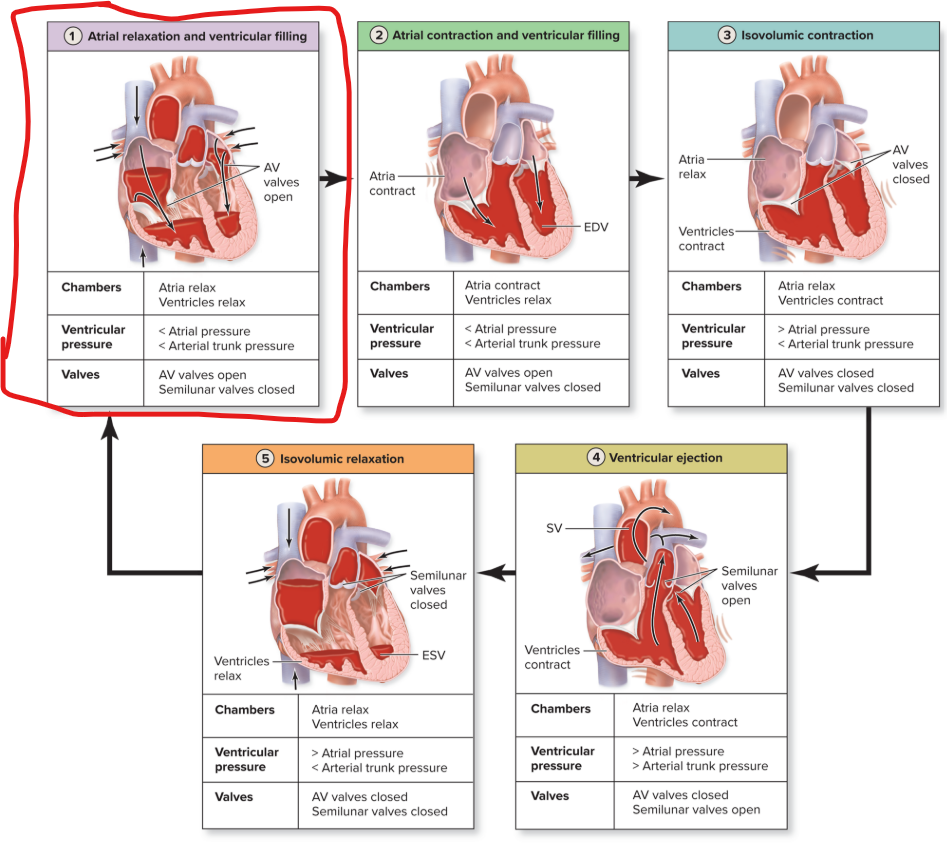
Atrial contraction and ventricular filling
SA node starts atrial excitation
Atria contract pushing remaining blood into ventricles
Ventricles filled to end-diastolic volume (EDV)
Atria relax for remainder of cardiac cycle
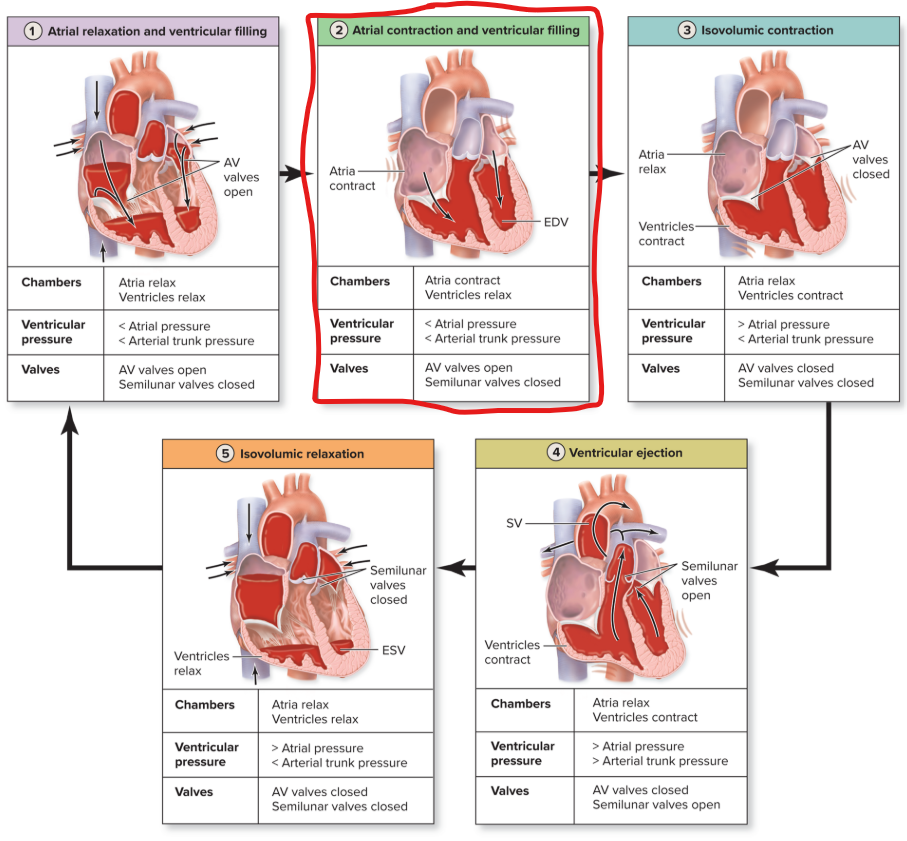
Isovolumic contraction
Purkinje fibers initiate ventricular excitation
Ventricles contract, pressure rises, and AV valves are pushed closed
Ventricular pressure is still less than arterial trunk pressure, so semilunar valves still closed
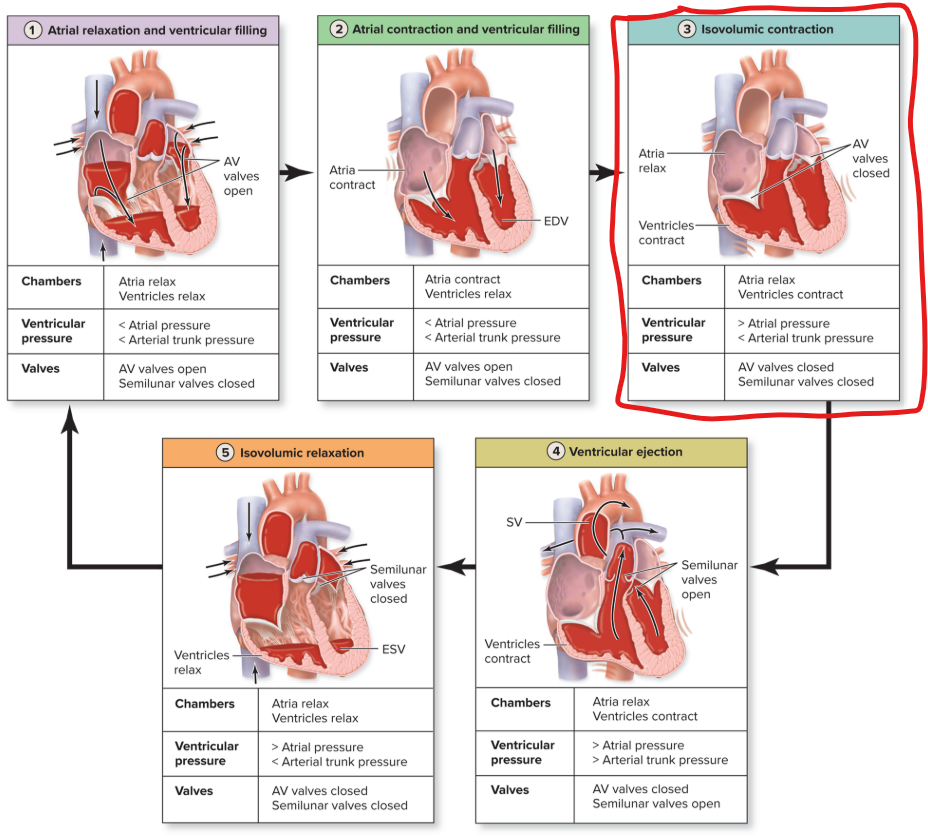
Ventricular ejection
Ventricles continue to contract so that ventricular pressure rises above arterial pressure
Semilunar valves forced open as blood moves from ventricles to arterial trunks
Stroke volume (SV)
blood ejected by ventricle
End systolic volume (ESV)
blood remaining in ventricle after contraction finishes
ESV = EDV − SV
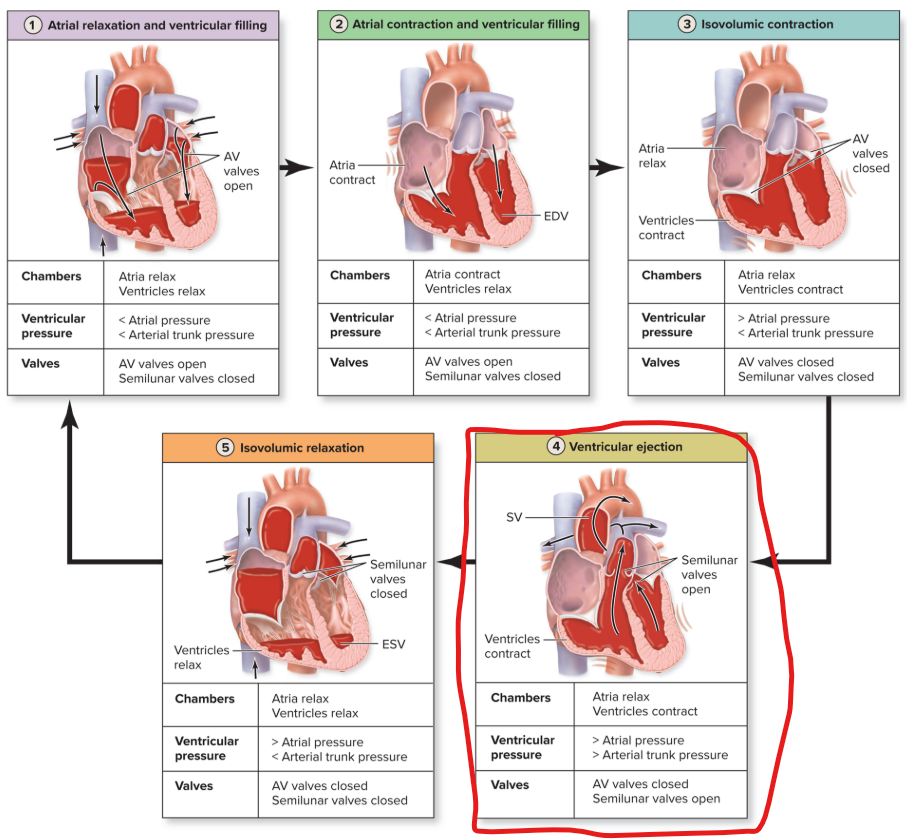
Isovolumic relaxation
Ventricles relax and start to expand, lowering pressure
Arterial pressure greater than ventricular pressure
By sliding back toward ventricles, blood closes semilunar valves
AV valves remain closed
When all valves are closed, blood neither enters nor leaves and the time is called “isovolumic”
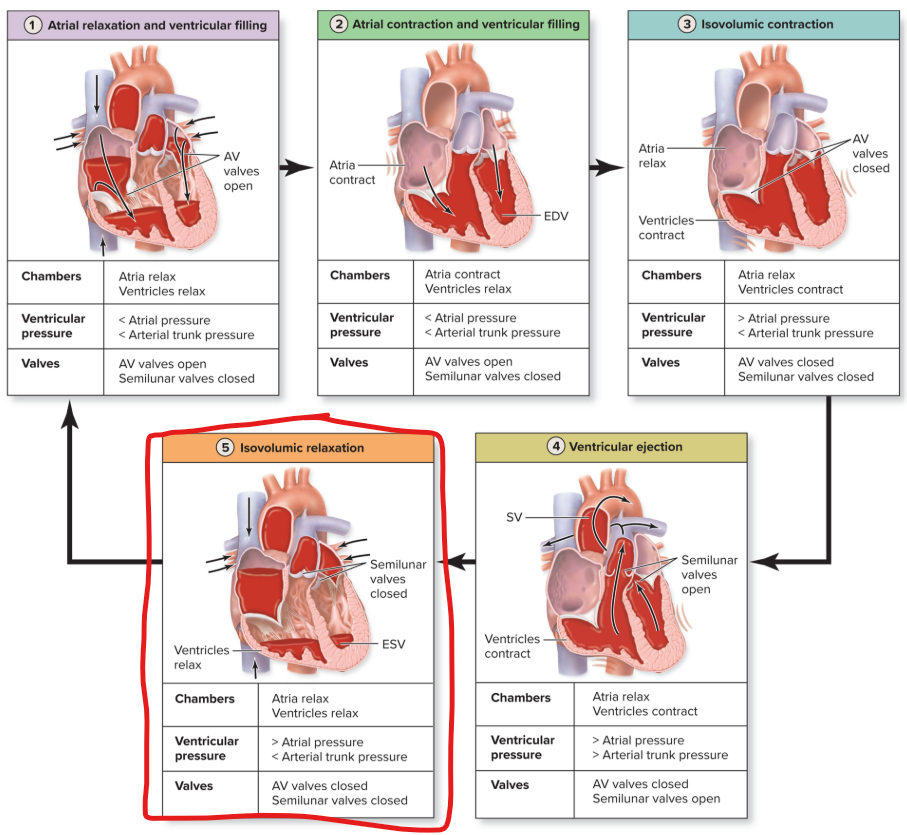
Ventricular balance
Equal amounts of blood are pumped by left and right sides of the heart
Left heart pumps blood farther and so must be stronger (thicker)
But ejected blood volumes must be the same or edema (swelling) can occur